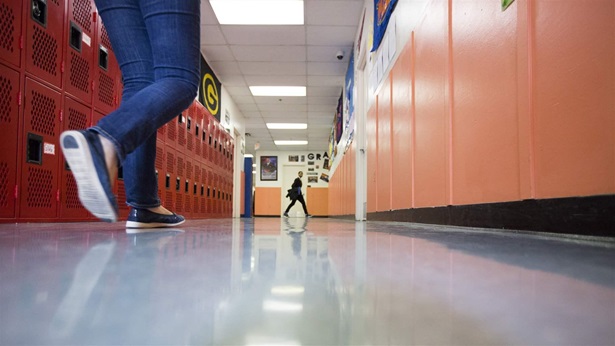How Local Leaders Are Expanding Broadband Access
Francella Ochillo of Next Century Cities discusses the role of community officials in expanding high-speed, reliable internet

Editor's Note: This page was updated on January 20, 2021.
The COVID-19 pandemic has increased attention on the crucial role that high-speed internet access plays in American life. In a time of social distancing, people need broadband to work from home, participate in online classrooms, access health care services, apply for public assistance, and perform ordinary household activities such as ordering groceries or prescriptions.
Although discussion about broadband deployment has long focused on federal efforts, local governments and communities have been working to close the digital divide: the gap between who has high-speed reliable internet and who does not. This interview with Francella Ochillo, executive director of Next Century Cities—a project of the nonprofit New Venture Fund that works to support mayors and community leaders across the country to ensure the expansion of reliable internet access—has been edited for clarity and length.
Q: How does the availability of broadband affect communities?
A: Broadband access, or the lack thereof, can change the viability of a community. It has a direct impact on local economic mobility, educational outcomes, the ability to age in place, and pathways for participating in our democracy. So when the digital divide takes root in a community, the impact is inherently local. In neighborhoods across the country, there are examples of small businesses that were forced to migrate their businesses online regardless of whether they had the requisite connectivity. Households with students and adults competing for low-bandwidth connections in their home are forced to take turns with applications such as online classes and video conferencing or risk getting disconnected. Seniors and those with limited mobility are among the most likely to be disconnected and don’t always have the access they need to obtain care, seek employment, or connect with loved ones online.
Local officials live in unserved and underserved areas of their communities and share residents’ frustrations. Ensuring that every resident can adapt and get online is as important as managing the public health crisis and its economic fallout.
Q: Broadband access issues are, as you say, inherently local. How have they been affected by the global pandemic?
A: The pandemic has exposed the many reasons why we simply can’t wait to achieve widespread broadband access and why local leaders are so important to helping us get there.
Many small businesses, which keep local economies alive, weren’t equipped to participate in the e-commerce marketplace. Many school districts are still struggling to close the digital divide, which in education we call the homework gap, for disconnected students, especially those in historically underserved neighborhoods. And some residents found themselves completely unable to access government services online.
Now that we’ve been confronted with vivid illustrations of those who are still searching and waiting for affordable and reliable broadband connections, we have to decide as a country who deserves to be connected and how we plan to make connectivity a reality for every resident. Doing so requires buy-in from every level of government to collect accurate data about which areas are actually served, supporting innovative community-level connectivity models, and treating broadband adoption as a priority instead of an afterthought.
Q: Can you say more about how broadband access affects local economies and job growth?
A: Since the pandemic began, broadband networks have become the lifeblood of local economies. High-speed connectivity is as essential to small business and economic development as other utilities such as water, sewer, or electricity.
Some business owners had to move to an online marketplace. Others will need broadband to transition into new jobs: Nationwide, over 100,000 small businesses have been forced to close in the wake of COVID-19, which has a trickle-down effect on local economies. While short-term opportunities from the Keep Americans Connected Pledge—an FCC-initiated program in which internet service providers committed to not terminate service to residential or small-business customers unable to pay their bills because of the pandemic, and to waive late fees to these customers—and funding from the CARES Act were helpful in the dawn of the pandemic, many local governments will not be able to provide similar programs without additional support.
Q: What about access to health care?
A: The number of hospitals utilizing telehealth programs was already on the rise before the pandemic, particularly in remote communities that are unable to attract medical expertise. It’s more than doubled over the last decade, providing savings for both patient and provider.
Then, once the pandemic began, patients needed to get online for all medical services, from specialist to preventive care. But these benefits were reserved for people connected to the internet. It’s frightening to think of how many people were unable to obtain essential care simply because they were unable to get online.
Q: As you noted, students have been affected too.
A: Yes. E-learning creates new opportunities, but only for those with affordable and reliable connections. More than 16 million students are affected by the “homework gap.” And families that live paycheck to paycheck have had to exhaust resources to maintain broadband subscriptions and digital tools needed for distance learning.
Q: Are there other benefits to the community of widespread broadband access?
A: Yes. Telehealth and the homework gap often get top billing in broadband access discussions. But it’s also imperative that we recognize how broadband facilitates participation in our democracy.
Being able to get online helps Americans in every community shape a government of the people, for the people, and by the people. Over the last two decades, students, community organizers, and everyday citizens have used digital platforms to instantaneously create movements—which, aided by high-speed connectivity, are no longer limited by geographic boundaries. Concerned citizens, officials, and corporate stakeholders in municipalities nationwide are using high-speed connectivity to improve overall quality of life for their residents, building more equitable communities. Broadband allows every resident to have access to the 21st century’s public square online, a place with endless possibilities.
Q: So what are local leaders doing to expand broadband access?
A: Local officials get it. As soon as stay-at-home orders were put in place, residents turned to local leaders for immediate solutions. So municipal governments began working hard to address a variety of issues related to the economic fallout, work from home, the public health crisis, and distance learning. And they were quick to transition almost all government services online.
Almost immediately, however, municipalities recognized that many residents lacked the necessary digital tools and connectivity to support remote work and e-learning. So they scrambled to provide connectivity solutions and forged partnerships to keep local businesses and school districts afloat.
But many solutions are temporary. Closing the digital divide demands long-term investments in access and adoption programs far beyond what municipalities can offer; it requires federal resources backed by state support.
Q: What’s the relationship between federal and state support for local expansion efforts?
A: State governments play an important role in funding broadband deployment, developing state broadband policy, and sharing information with local officials. Ten years ago, broadband deployment strategies and policymaking fell largely within the federal domain. But while federal partners remain integral to expanding broadband across the country, local governments, particularly members of Next Century Cities, recognize that state partnerships are a critical component of accelerating deployment in their communities.
Q: How does a local partnership with state governments on broadband access work?
A: States are getting more involved in implementing their own broadband policies, so local leaders are more likely to find support for their plans to expand access to broadband closer to home.
Our members say the two greatest policy advances that states could make to support their work are to remove regulatory barriers to broadband expansion in their communities and to provide resources to supplement federal funding. Being able to utilize state resources can help local officials implement innovative solutions that address their communities’ unique needs. Additionally, states play an indispensable role in collecting information about which communities have access to minimum benchmark broadband speeds and assessing whether those connections are affordable.
Q: When you say “innovative solutions,” what specifically do you mean?
A: In the absence of a national broadband strategy, local officials are calling on the creativity and industriousness that led them into public service. They’ve developed public-private partnerships that provide service and tools for residents in need. They’ve partnered with state and community leaders to reinvigorate infrastructure projects and implement new broadband adoption programs. They’re using every tool in their arsenal to bring broadband within reach for their residents.
Q: When it comes to getting localities online, your organization defines itself as “method neutral.” What does that mean?
A: At Next Century Cities, we know there’s no one-size-fits-all solution for connectivity. Each of our municipalities faces a variety of barriers and has access to a different set of assets. Some are financially and logistically capable of deploying municipally owned and operated networks, while others are finding greater success in public-private partnerships. Each of our communities is pursuing the same goal—fast, affordable, and reliable broadband for all—but there are a variety of ways to get there.
So we don’t endorse one method over another. Our work provides support for communities to make connectivity decisions for themselves.













